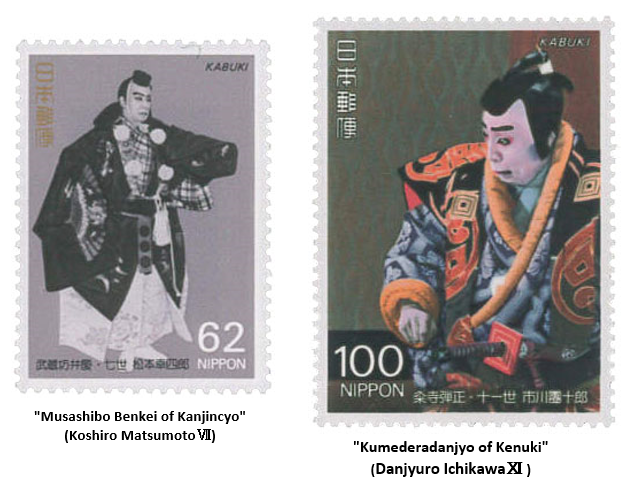
歌舞伎シリーズ 2 1991年(平成3年)9月27日発行 歌舞伎は日本独自の伝統芸能である。1965年4月重要無形文化財に指定され、2005年にユネスコで傑作宣言された。歌舞伎の語源は、「かたむく」が名詞化した「かぶき」と言われる。当初、戦国時代から江戸時代初頭にかけて京都で流行した。江戸中期になると、四代目鶴屋南北の『東海道四谷怪談』など、江戸で多くの作品が創出され、江戸歌舞伎の全盛期が到来した。切手は、代表的な歌舞伎演目と役者を採り上げ、6集(12演目)発行された。このリーフは、第2集である。
Kabuki Series 2 Issued on September 27, 1991 (Heisei3) Kabuki is a traditional Japanese performing art. It was designated as an important intangible cultural property in April 1965 and was declared a masterpiece by UNESCO in 2005. The etymology of Kabuki is said to be "Tilt". Initially, it was popular in Kyoto from the Warring States period to the beginning of the Edo period. In the middle of the Edo period, many works were created in Edo, such as "Tokaido Yotsuya Kaidan" by the 4th generation Tsuruya Nanboku, and the heyday of Edo Kabuki came. The stamps picked up representative Kabuki performances and actors, and the 6th collection (12th performance) was issued. This leaf is the 2nd collection.
